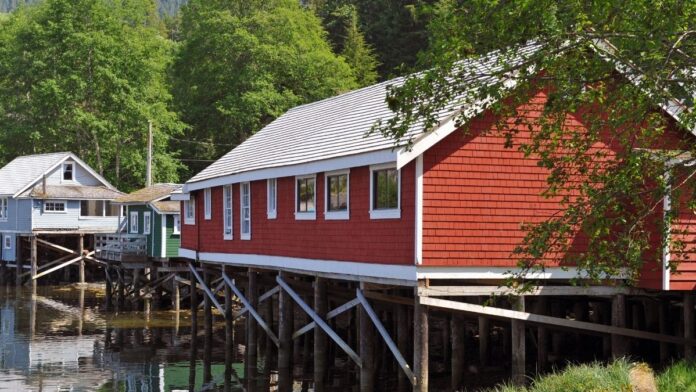Stilt houses in India are found in flood-prone terrains which are hugely susceptible to flooding. Most people are unaware of the concept of a stilt house and its benefits. If you are from the coastal region, it is best if you build or live in a stilt house. Here are the whats, whys, and hows of a stilt house in India. But before we get into that let’s check what a stilt house is.
What is a Stilt House?
Stilt houses are built in areas with high flooding and rainfall on well-raised stilts. Usually, found in the coastal area, these houses avoid the risks of flooding, water-logging, and the entry of pests.
Why are Stilt Houses Built Above Ground Level?
Stilt houses in India come in various designs and are not merely built at one location. In the Arctic, stilt houses help in protecting people from permafrost. On the other hand, if you look at the stilt houses found in Assam, India, the locals have built stilt houses around the banks of the river Brahmaputra to save themselves from floods and heavy rainfall.
Stilt houses are and must be built above ground to keep the residents safe from the floodwaters or frosting in colder regions. The heat from the house will melt the frosts found at the ground level of the house. In case of flooding during a rainy season, the stilts of the house keep water from entering the house and drowning it.
What Materials are Used to Build a Stilt House?
Sustainable and strong materials are used to build a stilt house. Materials like bamboo, cement, wood, stone, etc. are used to build stilt houses depending on the region and availability of materials.
Traditionally, stilt houses have a verandah extended around the house, however, modern stilt houses are designed to maximise living space. There are also a blend of modernisation and traditional stilt houses nowadays.
Bamboo Stilt Houses: Features
Bamboo stilt houses are best suited for flood prone areas. These are commonly found in the state of Assam, which is a highly flood prone area. High quality bamboo is found abundantly in Assam making it a convenient option for building stilt houses.
Assamese Stilt Houses: Features
Assamese Stilt houses are a necessity because of the flooring that happens after every rain in the region. Bamboo is the most commonly used material for building Assamese stilt houses because of its wide availability. With the advancement in technology, local of Assam have started building stilt houses with a mix of modern and traditional techniques. This helios them build a robust bamboo stilt house that can withstand flooding effectively.
Advantages of Stilt Houses in India
Stilt houses stand a huge advantage for the climatic conditions in India. Here are some of them:
- During the summers in India, an abundant amount of air flows underneath the floorboards. A slight elevation also increases airflow that helps in creating a pleasant and cool atmosphere inside your stilt house.
- During the rainy season in India, dry spaces will be retained under a stilt house. This particular space can be used to conduct useful activities, hanging certain things, keeping and tending animals, storing goods and chore.
- The residents of a stilt house can be protected from animals and maintain privacy from people.
- There is also a visual advantage to stilt houses, i.e., for instance, you can keep an eye on the surrounding terrains during hunting.
- Stitle houses in India can be built on hilly and/or non-flat terrains and on those regions with heavy flooding and rainfall.
- The height of a stilt house is what saves the residents of a stilt house from a flood.
The Bottom Line
In india, stilt houses are eligible for a lower insurance premium. However, flood insurance for stilt houses are provided at a lower insurance premium than normal houses. For flood prone areas, a stilt house is the only mandatory measure you can take for keeping yourself safe. Our article on stilt houses focuses on what a stilt house is, why they are build, and what kind of materials are used to build them. Hope we provide you with some insight into the construction and management of stilt houses.
FAQs
The stilt level refers to the ground level of a particular structure consisting of columns that support it.
An Indian stilt house costs around 10 lakhs to be built.
On average, a stilt house will take 4 to 5 months to be built. Sometimes, it may take 8 months too depending on the weather conditions of the region and the supply of construction materials and labor.









